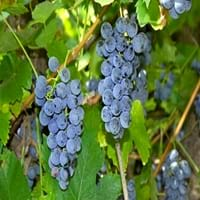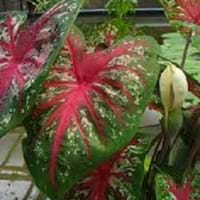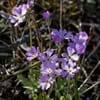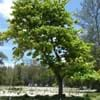Life Span
Perennial
Annual and Perennial
Type
Fruit
Tender Perennial
Origin
Northeastern United States, Mid-Atlantic United States, Southeastern United States, North-Central United States, Central United States, South-Central United States, Canada
Southern Europe, Mediterranean
Types
Not Available
Not Available
Habitat
meadows, Roadsides, Sandy areas, Terrestrial
gardens, Grassland, Prairies, tropical environments, Tropical regions
USDA Hardiness Zone
3-9
7-9
Sunset Zone
1a, 1b, 2a, 2b, 3a, 3b, 4, 5, 6, 7, 8, 9, 14, 15, 16, 17, 18, 19, 20, 21, 22, 23, 24
4, 5, 6, 14, 15, 16, 17, 18, 19, 20, 21, 22, 23, 24
Habit
Vining/Climbing
Mat-forming
Minimum Width
Not Available
Flower Color
White
White, Green
Flower Color Modifier
Bicolor
Bicolor
Leaf Color in Spring
Green, Dark Green
Gray Green
Leaf Color in Summer
Dark Green
Gray Green
Leaf Color in Fall
Orange, Gold, Bronze
Gray Green
Leaf Color in Winter
Light Green
Light Green
Leaf Shape
Oval Cordate
Linear
Plant Season
Spring, Summer, Fall
Spring, Summer, Fall, Winter
Sunlight
Full Sun, Partial Sun
Full Sun, Partial Sun
Type of Soil
Clay, Loam, Sand
Loam, Sand
The pH of Soil
Acidic, Neutral, Alkaline
Neutral, Alkaline
Soil Drainage
Well drained
Well drained
Bloom Time
Late Spring, Early Summer, Summer
Spring, Late Spring, Early Summer, Summer, Late Summer, Early Fall
Tolerances
Drought
Drought
Where to Plant?
Container, Ground
Container, Ground, Pot
How to Plant?
Seedlings, Stem Planting
Seedlings, Stem Cutting
Plant Maintenance
Medium
Medium
Watering Requirements
Do Not over Water, Do not water frequently, Keep the ground moist but not water-logged, Requires a lot of watering, Requires watering in the growing season
Allow soil to be completely dry in between waterings, Water Deeply, Water less during winter
In Summer
Lots of watering
Lots of watering
In Spring
Moderate
Moderate
In Winter
Average Water
Average Water
Soil pH
Acidic, Neutral, Alkaline
Neutral, Alkaline
Soil Type
Clay, Loam, Sand
Loam, Sand
Soil Drainage Capacity
Well drained
Well drained
Sun Exposure
Full Sun, Partial Sun
Full Sun, Partial Sun
Pruning
Remove damaged leaves, Remove dead branches, Remove dead leaves
Cut or pinch the stems, Do not prune during shooting season, Prune if you want to improve plant shape, Prune prior to new growth, Remove deadheads
Fertilizers
All-Purpose Liquid Fertilizer, Fertilize every year, Nitrogen
No fertilizers needed
Pests and Diseases
Red blotch
fungus, Insects, Red blotch
Plant Tolerance
Drought
Drought
Flowers
Insignificant
None
Flower Petal Number
Single
Single
Foliage Texture
Coarse
Fine
Foliage Sheen
Glossy
Matte
Attracts
Moths
Bees, Birds, Butterflies
Allergy
Slows blood clotting
Skin irritation
Aesthetic Uses
Not Used For Aesthetic Purpose
Beautification, Showy Purposes
Beauty Benefits
Improve skin condition
Not Available
Environmental Uses
Air purification
Air purification
Medicinal Uses
constipation, Diarrhea, Eye Problems, Heart problems, High blood pressure, High cholestrol, Liver problems, Metabolic disorders
No Medicinal Use
Part of Plant Used
Fruits, Leaves
Whole plant
Other Uses
Used As Food
Showy Purposes
Used As Indoor Plant
No
No
Used As Outdoor Plant
Yes
Yes
Garden Design
Edible, Fruit / Fruit Tree, Vine
Alpine, Container, Edging, Foundation, Groundcover, Mixed Border, Rock Garden / Wall
Botanical Name
VITIS labrusca 'Catawba'
CALADIUM 'Aaron'
Common Name
Catawba Grape, Fox Grape
Aaron Caladium, Angel Wings, Fancy-leaved Caladium
In Hindi
Catawba अंगूर
Aaron Caladium
In German
Catawba Traube
Aaron Caladium
In French
Catawba raisin
Aaron Caladium
In Spanish
Catawba uva
Aaron Caladium
In Greek
Catawba Σταφύλι
Aaron τροπικό φυτό
In Portuguese
Catawba Grape
Aaron Caladium
In Polish
Catawba winogron
Aaron Caladium
In Latin
Uva Catawba
Aaron Caladium
Phylum
Anthophyta
Tracheophyta
Class
Magnoliopsida
Liliopsida
Order
Vitales
Alismatales
Clade
Angiosperms, Eudicots, Rosids
Angiosperms, Monocots
Tribe
Not Available
Not Available
Subfamily
Vitoideae
Aroideae
Number of Species
Not Available
Importance of Catawba Grape and Aaron Caladium
Want to have the most appropriate plant for your garden? You might want to know the importance of Catawba Grape and Aaron Caladium. Basically, these two plants vary in many aspects. Compare Catawba Grape and Aaron Caladium as they differ in many characteristics such as their life, care, benefits, facts, etc. Every gardener must at least have the slightest clue about the plants he wants to plant in his garden. Compare their benefits, which differ in many ways like facts and uses. The medicinal use of Catawba Grape is constipation, Diarrhea, Eye Problems, Heart problems, High blood pressure, High cholestrol, Liver problems and Metabolic disorders whereas of Aaron Caladium is No Medicinal Use. Catawba Grape has beauty benefits as follows: Improve skin condition while Aaron Caladium has beauty benefits as follows: Improve skin condition.
Compare Facts of Catawba Grape vs Aaron Caladium
How to choose the best garden plant for your garden depending upon its facts? Here garden plant comparison will help you to solve this query. Compare the facts of Catawba Grape vs Aaron Caladium and know which one to choose. As garden plants have benefits and other uses, allergy is also a major drawback of plants for some people. Allergic reactions of Catawba Grape are Slows blood clotting whereas of Aaron Caladium have Skin irritation respectively. Having a fruit bearing plant in your garden can be a plus point of your garden. Catawba Grape has showy fruits and Aaron Caladium has no showy fruits. Also Catawba Grape is not flowering and Aaron Caladium is not flowering . You can compare Catawba Grape and Aaron Caladium facts and facts of other plants too.





